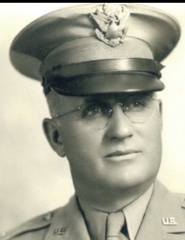Tells of Iowa Men in Action on West Front
By Frank Miles
(Daily Times Herald War Correspondent)
In Germany (IDPA) -- Many Iowans were among Americans who fought in or supported Yankee planes, artillery, tanks and infantrymen that tore nazi forces in the Rhineland to shreds.
Sgt. George Kanphus, McCallsburg, was in the 28th "Bloody Bucket" infantry division which marched almost 40 miles through ankle-deep mud in three days to mop up Siegfried lines defenses south of Cologne, capturing 55 German towns and scores of prisoners, including a colonel, seizing vast quantities of material and liberating six Americans, one of whom was a young aviator.
To achieve their objective, 28th soldiers broke through concrete fortifications, blasted pill boxes, flushed patrols with rifles and hand grenades, knocked out scores of enemy vehicles and killed, wounded and captured thousands of jerries.
The most surprised German captive was one, who, while operating a switchboard, looked up to see 15 of his buddies coming into the room ahead of doughboy guards. The prisoner, who most surprised the Americans, was the one, who in a house quarantined for diphtheria, sent a note promising on his "honor as a German soldier to surrender as soon as he could come out."
A few days before this was written I set out to find Cpl. Marion F. Dunn, of the 8th "Golden Arrow" division, at the request of his father-in-law, W.J. O'Connell, a World War I major of Des Moines. One company of his organization was exchanging "compliments' with Jerries across the Rhine river. Near a concrete shelter from which the nazis had been driven a dead young German officer lay dead on an American cot. The body had been taken from the structure. A black eye and pistol bullet in the back of the head indicated he might have been slain by his own men.
"Let's keep the sun out of his face," said a GI in grim humor, replacing a cloth.
A moment later a couple of hostile mortars burst in our sector, then one of our tank destroyer guns fired at Jerries spied running between their fox holes.
The following day through division headquarters and with Cpl.Milard Ireland, of Kansas City, Kan., I met Corporal Dunn at a forward battalion command post, where he had come from a hot spot farther up front. A capital city fireman when inducted a year ago, he was a machine gunner with a purple heart for wounds received in the Hurtgen Forest.
Corporal Dunn said his closet friend in the army was Sgt. Robert Cribbs, Davenport, who was in his platoon. They came into the service together and been together all the way through.
During our conversation Capt. S.E. Tindal, Estherville, a staff officer, of the 69th division, introduced himself after learning I was an Iowa scribe. He started in the army in the 34th division.
After leaving Corporal Dunn and Captain Tindal I jeeped to a place where I learned that Cpl. Mark N. Reed, Beech, of the 382nd medical collecting company, had been awarded the Croix de Guerre by the provisional Republic of France for exceptional services in the course of operations in the liberation of that country. A Jerry shell rocked the building in which I got that information.
While the 8th division was fighting near Cologne a regimental commanding officer announced that any platoon which got a Jerry tank would be rewarded with a pass to Paris. Two platoons cautiously advanced on a Mark IV, to no resistance. Nevertheless both poured fire into it with M-1s, tommy guns and BARS and out jumped four Jerris to surrender.
Argument then was which platoon did the job. Staff Sgt. Clair Hindman, Colfax, was in the one that won the decision.
Second Lt. Bernard J. Coen, Sioux City, of the 8th division has been awarded the air medal for meritorious achievement as liaison pilot in connection with military operations, and Pvt. Darold W. Tackett, Sidney, has won the soldiers medal.
Source: Carroll Daily Times Herald, April 21, 1945
![]()

